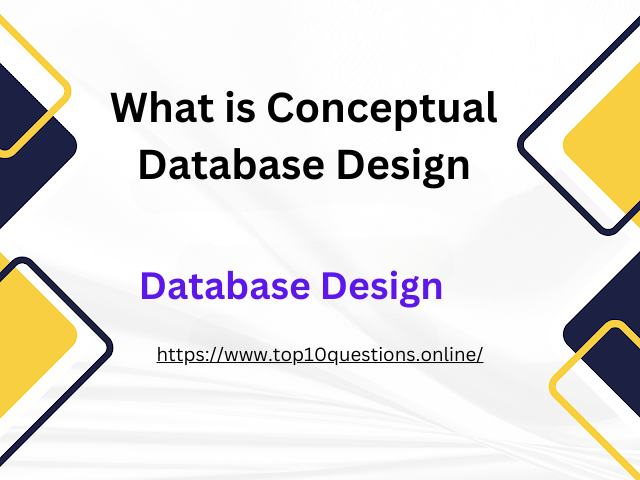What is Conceptual Database Design
Conceptual database design is a crucial aspect of the database design process, involving the creation of an abstract representation of the organization's data requirements.
 |
| What is Conceptual Database Design |
Conceptual Database Design
Conceptual database design is a crucial aspect of the database design process, involving the creation of an abstract representation of the organization's data requirements. This phase is characterized by identifying and defining the entities and their relationships in order to create a conceptual model that accurately represents the business domain. During this process, it is essential to engage with stakeholders to gather necessary information about their data needs and understand how they interact within the organizational context. By focusing on creating a high-level representation of the data without getting into technical details, conceptual database design lays a solid foundation for subsequent stages in the database development lifecycle.
In conceptual database design, emphasis is placed on understanding business rules and constraints that govern how different entities are related to each other. This involves analyzing various scenarios that illustrate how data flows within an organization and how different entities are interlinked. Furthermore, this phase also involves determining key attributes associated with each entity and establishing cardinality constraints between them. Without a well-thought-out conceptual database design, there is a risk of developing databases that do not accurately reflect an organization's needs or fail to support future growth and changes. Therefore, investing time in creating a robust conceptual model ensures that subsequent stages such as logical and physical designs align with business requirements effectively.
To summarize, conceptual database design serves as a critical bridge between understanding business needs and translating them into an abstract representation of data requirements.
Represent Entities
The process of representing entities in database design is a crucial step that requires careful consideration and strategic planning. When embarking on the database design process, it is essential to identify the key entities that will be central to the system. These entities can range from customer information, product details, or employee records, depending on the specific requirements of the application. Once these entities have been identified, they must be accurately represented within the database schema to ensure efficient retrieval and manipulation of data.
Representing entities involves defining their attributes and establishing relationships with other related entities. This step requires a thorough understanding of the data being stored and how it will be accessed and utilized within the system. Careful attention must be paid to ensuring that each entity is properly normalized to minimize redundancy and improve data integrity. Additionally, choosing appropriate data types for each attribute ensures that data is stored efficiently while maintaining accuracy.
Throughout the database design process, representing entities effectively lays a solid foundation for building a robust and scalable system. By carefully identifying key entities, defining their attributes, establishing relationships, and normalizing data structures, developers can create a well-organized database schema that supports optimal performance. This thoughtful approach not only facilitates effective storage and retrieval of information but also sets the stage for future expansion and adaptation as business needs evolve. Ultimately, representing entities in database design is not just about organizing data; it’s about creating a dynamic framework that supports operational efficiency and growth.
Represent Relationship
Merge the Relation
The process of merging relations in the database design workflow is a crucial step that requires thoughtful consideration and strategic planning. In my experience, this stage involves analyzing the different data tables and identifying how they can be combined to create efficient and effective relationships. Understanding the interconnectivity of various data entities is essential to ensure that the merged relation aligns with the overall goal of the database design. This process often involves evaluating primary keys, foreign keys, and normalization techniques to guarantee a seamless integration of data.
The merge relation phase also demands an acute attention to detail as even minor errors can lead to significant discrepancies in the database structure. Through my work in this field, I have learned that careful documentation of each step in the merging process is crucial for future reference and troubleshooting. Furthermore, collaboration among team members during this phase is vital to bring diverse perspectives into play and ensure comprehensive problem-solving approaches. Overall, successfully merging relations during the database design process not only optimizes efficiency but also lays a solid foundation for accurate data storage and retrieval.
In hindsight, I realize that navigating through the complexities of merging relations has deepened my understanding of relational databases and enriched my problem-solving abilities. Moreover, this aspect of database design has honed my critical thinking skills by requiring me to evaluate multiple factors before making decisions about merging relations. Ultimately, I am grateful for having gained invaluable experience in leveraging relationships within databases effectively as it has equipped me with a solid foundation for future endeavors in information management systems.